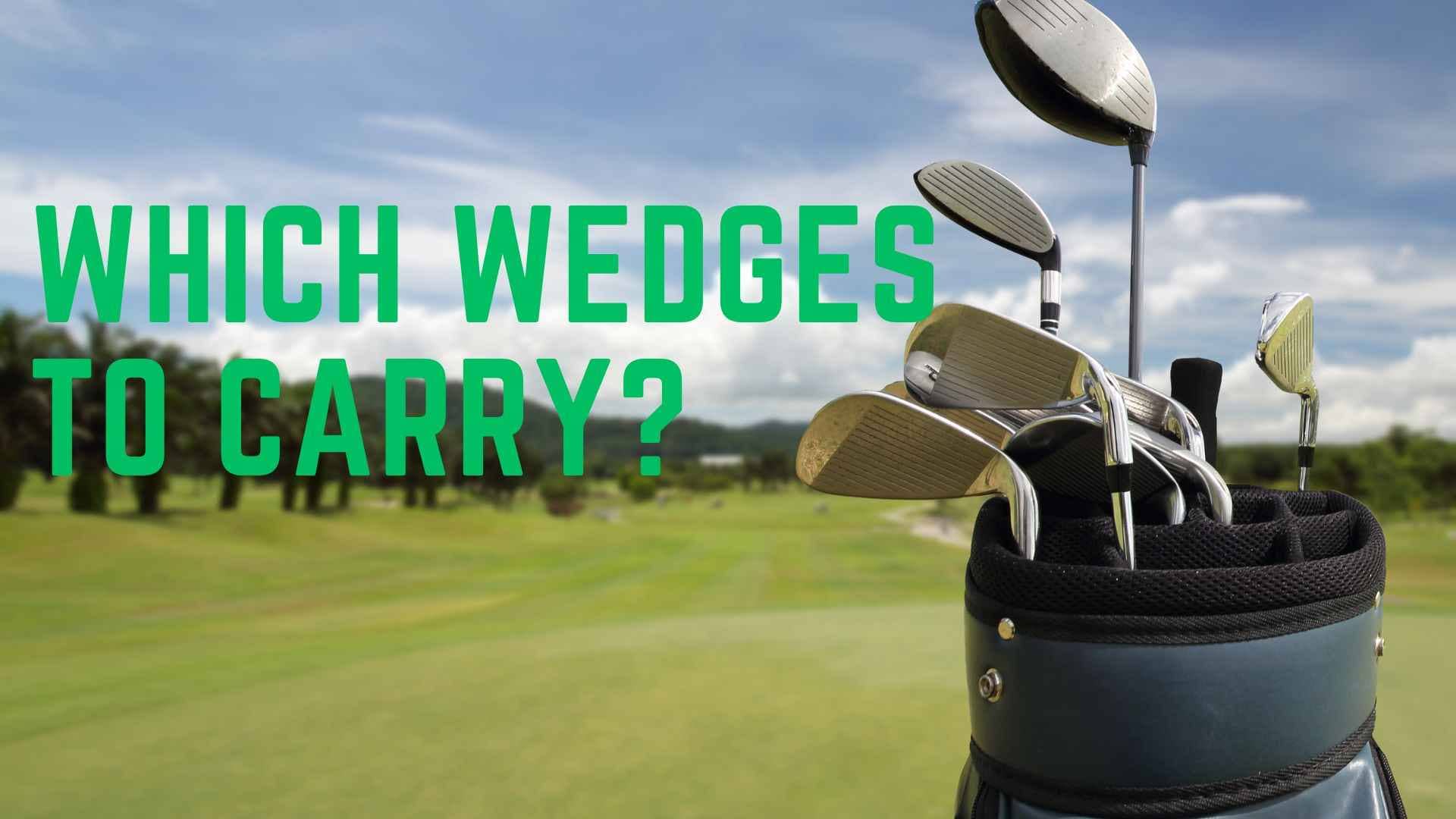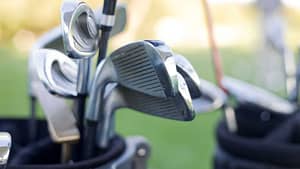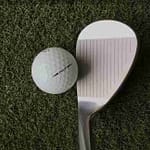
Having the right set of wedges in your bag and knowing what wedges do I need as a golfer can make all the difference in your game. But with so many different types of wedges available, it can be tough to know the best wedges to have in bag.
Don’t know what golf wedges should you carry? Our expert guide has got you covered. Get the inside scoop on selecting the best 3 wedges to carry for your needs.
A golfer should carry at least 2-3 wedges in their bag, and this should all depend on your skill level and the type of wedge you use.
The pitching wedge should be the only wedge carried by beginners and high handicappers, while the gap wedge should only be carried by mid handicappers and high handicappers.
Getting good scores on the golf course does not require that you have different four or 5 wedges on hand. If you practice with a few of them, you will eventually become a really consistent player.
In this guide, we’ll cover your questions like what wedges should I have in my bag, what degree wedges should I have, how many wedges should I carry, what degree wedges should I have and, what loft sand wedges should I have. We’ll walk you through the key factors to consider and offer top tips for selecting the ideal wedge.
What Wedges Do I Need?
What Golf Wedges Should You Carry? The answer is there are three main types of wedges pitching wedges, sand wedges, and lob wedges. Generally, it’s recommended that you carry at least two wedges, a pitching wedge, and a sand wedge.
If you want to carry a third wedge, a lob wedge is a good choice as it can help you hit high, soft shots around the green.
Pitching wedges are the lowest lofted of the three and are typically used for shorter approach shots, while sand wedges are designed to help you get out of bunkers and are characterized by a wider, flatter sole.
Lob wedges, on the other hand, are the highest lofted of the three and are used for high, soft shots around the green.
While these three wedges are the most common, there are also gap wedges and approach wedges available.
Gap wedges are designed to fill the distance gap between your pitching wedge and sand wedge, while approach wedges are similar to pitching wedges but with a slightly higher loft angle.
If you’re a more experienced player or have a specific shot you struggle with, you may want to consider adding a gap wedge or approach wedge to your bag. These wedges can help you better control your distances and improve your accuracy on approach shots.
How Many Wedges Should You Carry?
As mentioned, it’s recommended for how many wedges should you carry should at least two wedges, a pitching wedge, and a sand wedge.
If you want to add a third wedge, a lob wedge is a good choice. However, carrying more than three or four wedges can be unnecessary and clutter your bag.
Consider your individual game and the types of shots you typically encounter on the course when deciding which wedges to carry. If you struggle with bunker shots or frequently find yourself in greenside rough, a sand wedge may be worth adding to your bag.
Two Wedge Pair:
For those who prefer to carry only two wedges in their bag, a pitching wedge with a loft of around 46-48 degrees and a sand wedge with a loft of around 54-56 degrees are the most common pairing.
The gap between these two clubs should be around 8-10 degrees. This gap allows for a consistent progression in loft and distance between the two clubs.
Three Wedge Pair:
Now, what 3 wedges should you carry? For players who prefer to carry three wedges, a typical setup might include a pitching wedge with a loft of around 46-48 degrees, a gap wedge with a loft of around 50-52 degrees, and a sand wedge with a loft of around 54-56 degrees.
The gap between the pitching wedge and gap wedge should be around 4-6 degrees, while the gap between the gap wedge and sand wedge should be around 8-10 degrees.
This setup allows for greater versatility in shot selection, while still maintaining consistent spacing between wedges.
Four Wedge Pair:
For more experienced players, it is not difficult to choose which wedges to carry as carrying four wedges can provide even greater versatility on the course.
A typical setup for a four-wedge pair might include a pitching wedge with a loft of around 46-48 degrees, a gap wedge with a loft of around 50-52 degrees, a sand wedge with a loft of around 54-56 degrees, and a lob wedge with a loft of around 58-60 degrees. The gap between the pitching wedge and the gap wedge should be
In summary, the number of degrees left between wedges when choosing two, three, or four wedge pairs depends on various factors.
Generally, it is recommended to leave a larger gap between pairs with a smaller number of wedges and a smaller gap between pairs with a larger number of wedges when choosing which wedges to carry. Ultimately, the aim is to favor and uplift your game on the golf course.
What Degree Wedges Should You Have?
The degree of your wedges will depend on your individual game and the types of shots you typically encounter on the course.
Pitching wedges typically have a loft angle of around 46-48 degrees, while sand wedges typically have a loft angle of around 54-56 degrees. Lob wedges can have a loft angle of anywhere from 58-64 degrees.
When choosing the degree of your wedges, consider the distance you typically hit each club and the types of shots you need to hit.
A higher lofted wedge can help you hit high, soft shots around the green, while a lower lofted wedge may be more suitable for approach shots from the fairway.
When selecting multiple wedges for your golf bag, it’s important to consider the degree of loft on each club and the gaps in distance between them.
The ideal distance gaps between wedges will have consistent spacing between your wedges to avoid any gaps in the distance that can lead to missed shots.
Remember to keep it simple and avoid cluttering your bag with unnecessary clubs. With the right set of wedges, you’ll be able to approach the green with confidence and improve your game on the course.
How Many Wedges High Handicappers Should Carry?
High handicappers should carry at least two wedges in their bag – a pitching wedge and a sand wedge.
A pitching wedge is typically included in most golf iron sets and can be used for approach shots from around 100-120 yards out. It has a loft of around 44-48 degrees and is suitable for hitting low to mid-trajectory shots.
A sand wedge, on the other hand, has a loft of around 54-58 degrees and is essential for getting out of bunkers and hitting shots from the rough around the green. It is designed to produce a high trajectory and plenty of spins to stop the golf balls quickly on the green.
For high handicappers who struggle with their short game, a gap wedge may also be useful. It has a loft between a pitching wedge and a sand wedge, usually around 50-52 degrees, and can be used for approach shots from around 80-100 yards out.
Ultimately, the decision on which wedges to carry should be based on individual preferences and playing style.
How Many Wedges Mid Handicappers Should Carry?
The number of wedges a mid handicapper should carry is three: a pitching wedge (around 46-48 degrees of loft), a gap wedge (around 50-54 degrees of loft), and a sand wedge (around 54-58 degrees of loft).
These wedges provide enough variety in loft angles to cover most situations on the course, from approach shots to short game shots around the green.
How Many Wedges Low Handicappers Should Carry?
The number of wedges low handicappers should carry are four wedges: a pitching wedge (around 48-50 degrees), a gap wedge (around 52-54 degrees), and a sand wedge (around 56-58 degrees).
These wedges can cover a wide range of distances and provide enough versatility to handle various lies and situations on the course. Some players may also opt to carry a fourth lob wedge (around 60 degrees) in pursuit of which wedges to carry for more specialized shots, but this is not necessary for all golfers.
Conclusion: Which Wedges To Carry In a Bag?
Ultimately, it’s important to consider your own game and the types of shots you typically face when deciding on the number and type of wedges to carry. Overall, the best wedges to have in your golf bag depend on your individual needs and preferences.
However, having a pitching wedge, gap wedge, sand wedge, lob wedge, and approach wedge in your golf bag will provide you with a variety of options for different shots around the green.















